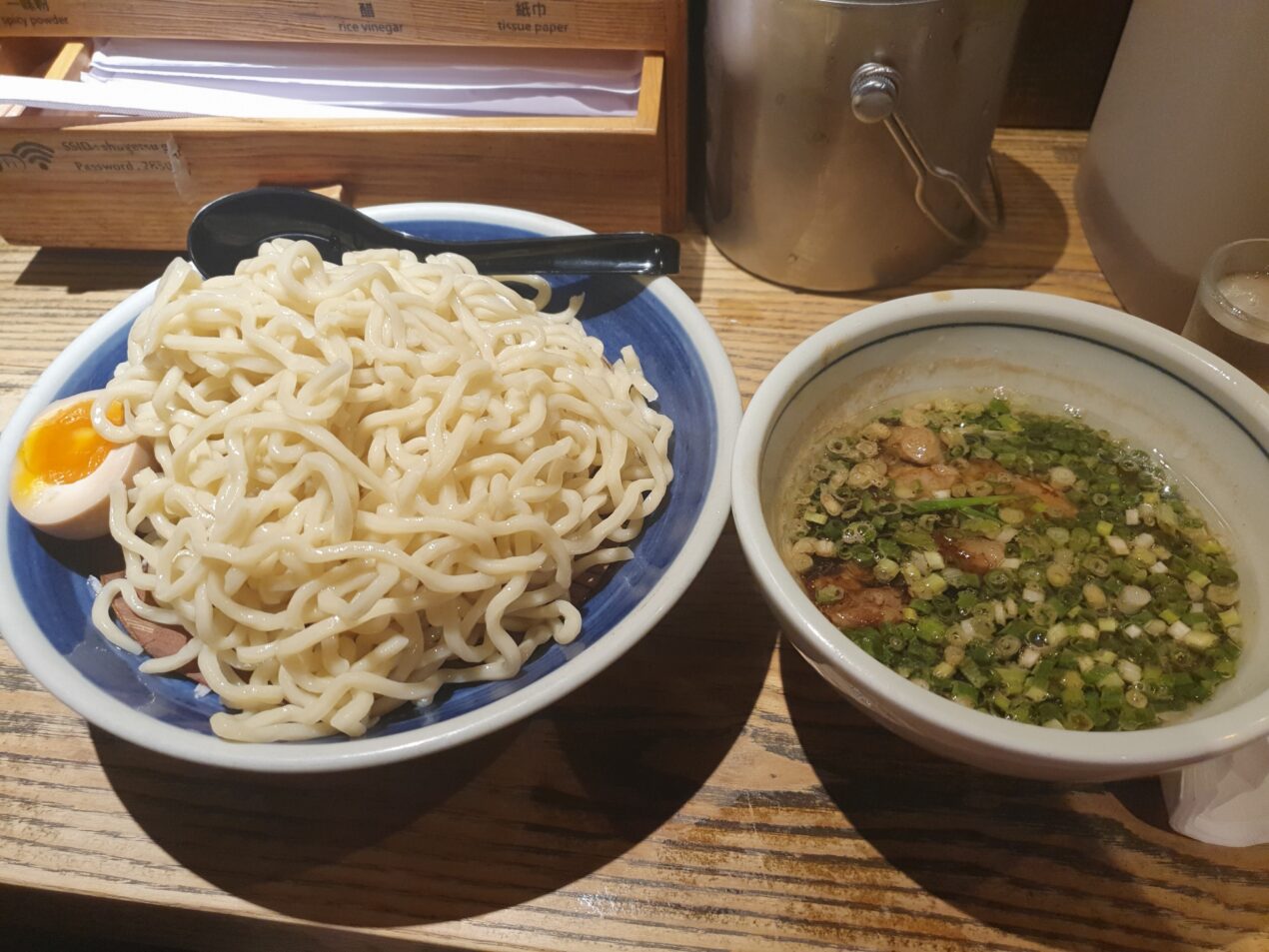Shugetsu’s Tsukemen: My Number One Meal in All of Hong Kong
Shugetsu’s tsukemen would unquestionably be my last meal on earth if I was ever on death row. This might sound absurd but it isn’t a lie. Shugetu’s tsukemen was (and still is) my number one meal when I was training for a powerlifting competition – unfortunately, I kept eating like I was training for a powerlifting competition once I ended and I developed a crippling tsukemen addiction.
There have been worse things in life.
This Dr. Jekyll and Mr. Hyde, a ramen hybrid consisting of a salty broth, 300 grams of al-dente elastic noodles, and fatty pork belly cubes is everything that is right in the world. Pair it with an ice-cold, crisp Suntory Premium draft beer, crunchy fried chicken cartilage “bar snacks”, and half-moon pork-filled gyoza pillows, and your last days won’t be for nothing.
Below, I’ll walk you through everything I love about Shugetsu and why it is my favorite meal in all of Hong Kong. Let’s have a look!
Wait a Minute: What the Heck is Tsukemen?
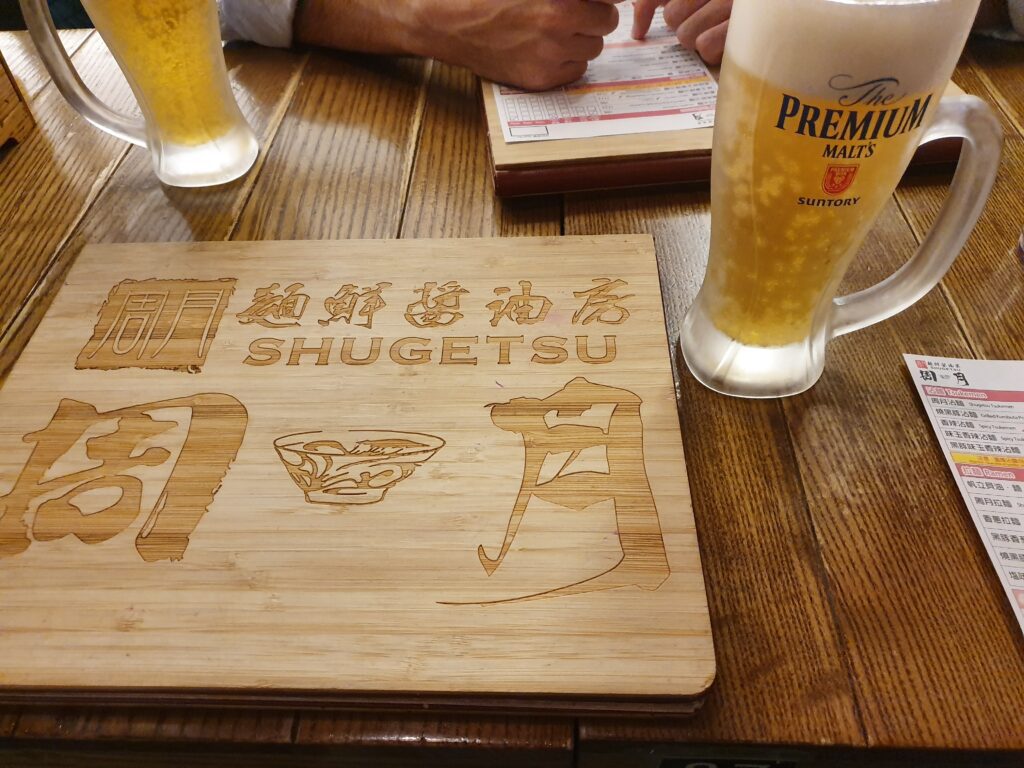
Don’t worry. I asked the same thing when I first went to Shugetsu. Japanese for ‘dipping noodle’, tsukemen is a popular ramen dish that consists of traditionally cold (or room temperature), yellowish, slightly chewy, noodles (often soba or udon) that are served separately and dipped in an accompanying hot broth (that seasons the noodles).
Traditional ramen is served hot and contains all its ingredients (soup, broth, accoutrements) in the same bowl.
Picture your favorite ramen broth, now picture it on steroids. Because the broth and/or soup is served separately from the noodles, it is typically intense and highlights the most extreme versions of whatever it is flavored with (ex. Meat, fish, soy sauce, and fishmeal).
I would order a 5-liter jug of this broth if I could and drink it like I do Gatorades. Or, I’d “put a little bit in my hair when I’ve had a rough week (Wedding Crashers is one of the all-time greats).”
Chicken Cartilage, Gyoza, & Karaage (Fried Chicken) Galore
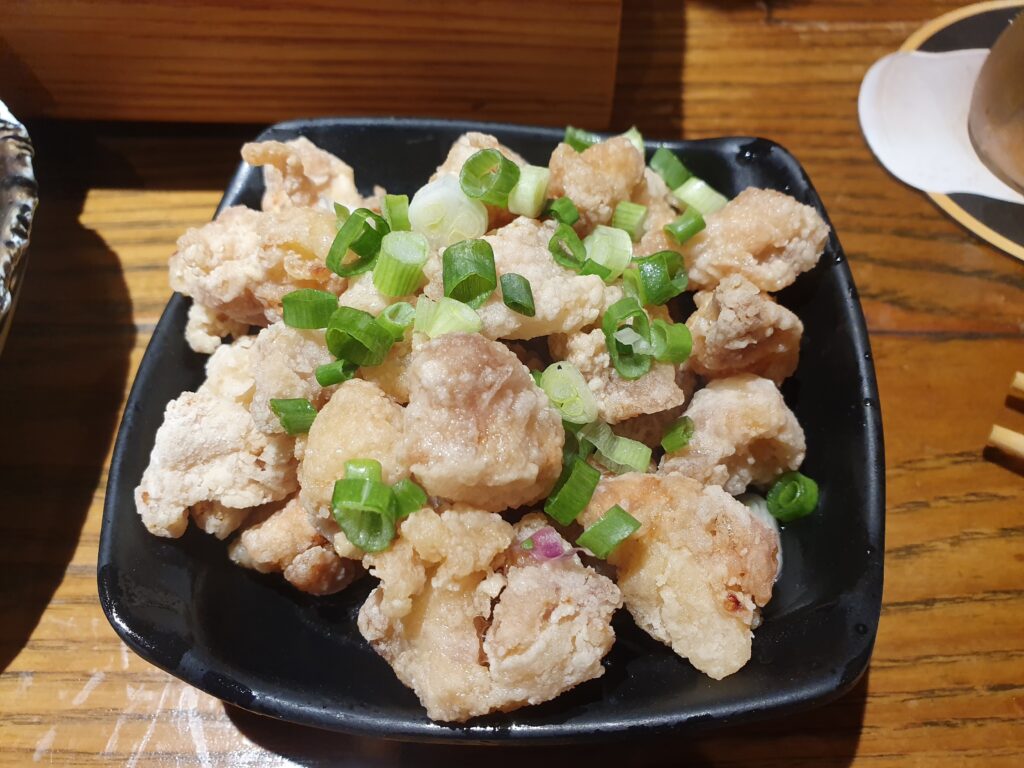
First, a Suntory Premium draft beer is mandatory. This is by far what I consider the most ‘drinkable beer’ in existence. It’s crisp and light, boasts a decent-sized creamy foam head (or should), clocks in at a surprising 5.5% ABV, and has a slightly bready malt and herbal finish. The reason this is mandatory is that nothing pairs better with fried chicken than a light, drinkable pilsner.
Now, onto the fried chicken cartilage and karaage (I’m still trying to locate pictures on my phone of both – they will be up soon!). A lot of people take a step back and are hesitant when you mention anything outside of the core chicken arsenal and constitution (wings, thighs, breasts). Chicken cartilage is criminally underrated.
They are crunchy, chewy, golden little balls of flavor that induce a crippling (in the best way possible) unquenchable thirst that can only, in fact, be quenched by the ice-cold Suntory Premium you ordered at the beginning of your meal. Don’t forget to dip these little chunks into Shugetsu’s homemade vinegar and soy dipping sauce for an extra salty, slightly sour, and tangy explosion.
Karaage is definitely more traditional when you think of “beer and fried chicken,” and there’s a reason why. It’s juicy, crackling, marinated, and deep-fried. Not a single one of those words conjures up negative emotion. While, in my opinion, the chicken cartilage bites are the star of the show, Shugetsu’s karaage can hold its own. However, it is definitely more filling, so make sure you save enough room for the main enchilada (the tsukemen).
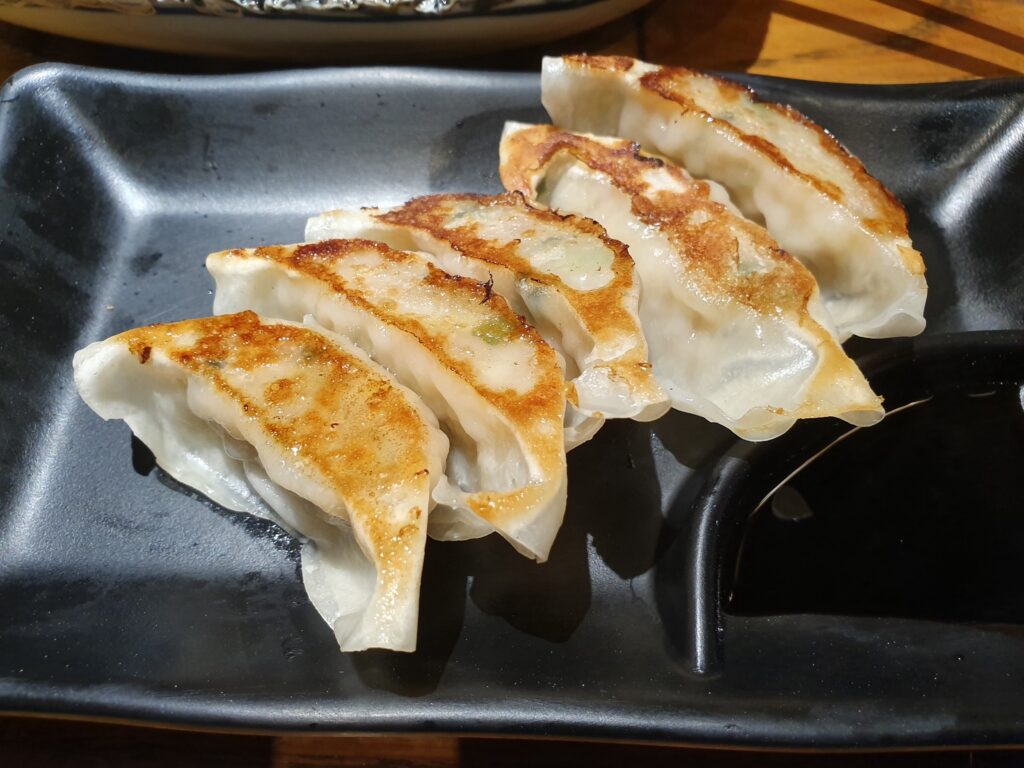
Finally, Shugetsu’s gyozas. These are an absolute guilty pleasure of mine. Something about the thinner, prefabricated wrappers that gyoza use vs. thicker, traditional dumpling dough just makes for the perfect bite – and the fact that the meat is typically more finely textured. They are dangerous though, as you can easily put back a dozen or so of these bad boys before you realize you still have your tsukemen on the way.
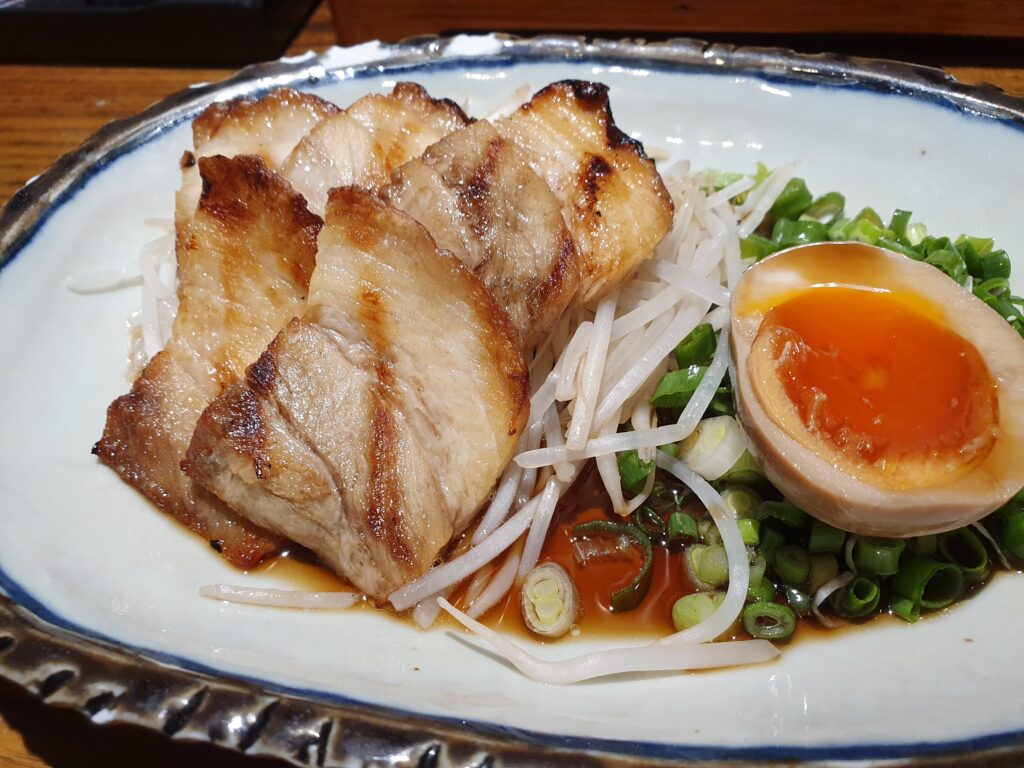
Salty, Chewy, Fatty Goodness in Every Bite
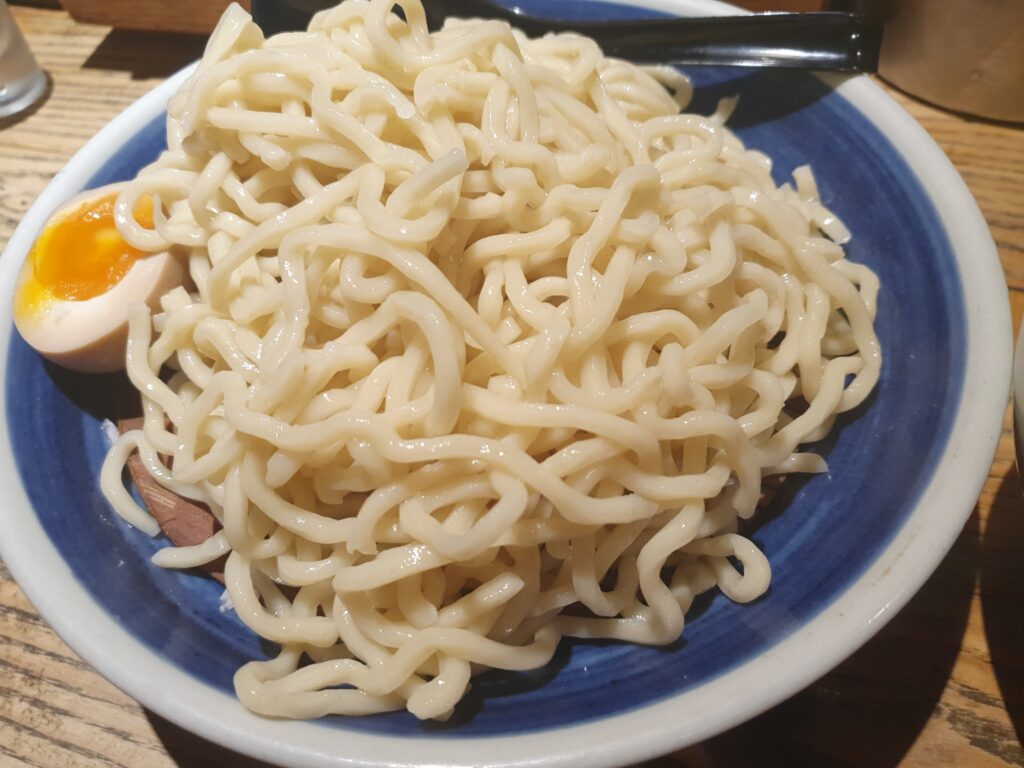
Now, there’s more than one way to skin a cat – and tsukemen is no different. Shugetsu lets you customize your tsukemen down to the T. Want cold noodles instead of hot? No problem. Extra bamboo shoots or a spicy broth? They’ve got you covered.
Here’s my order: ‘Shugetsu Tsukemen’ (it is the top choice on the white and red ordering slip), traditional flavor, cold noodles, 300 grams. Depending on the day, and how many appetizers I’ve ordered, I’ll upgrade to the ‘Grilled Kurobuta Pork Belly Tsukemen’. I should note that all orders come with a flavored soft-boiled egg but for some odd reason I’ve never been a soft-boiled egg type of guy – so I usually pass it off to my more than accepting tsukemen partner.
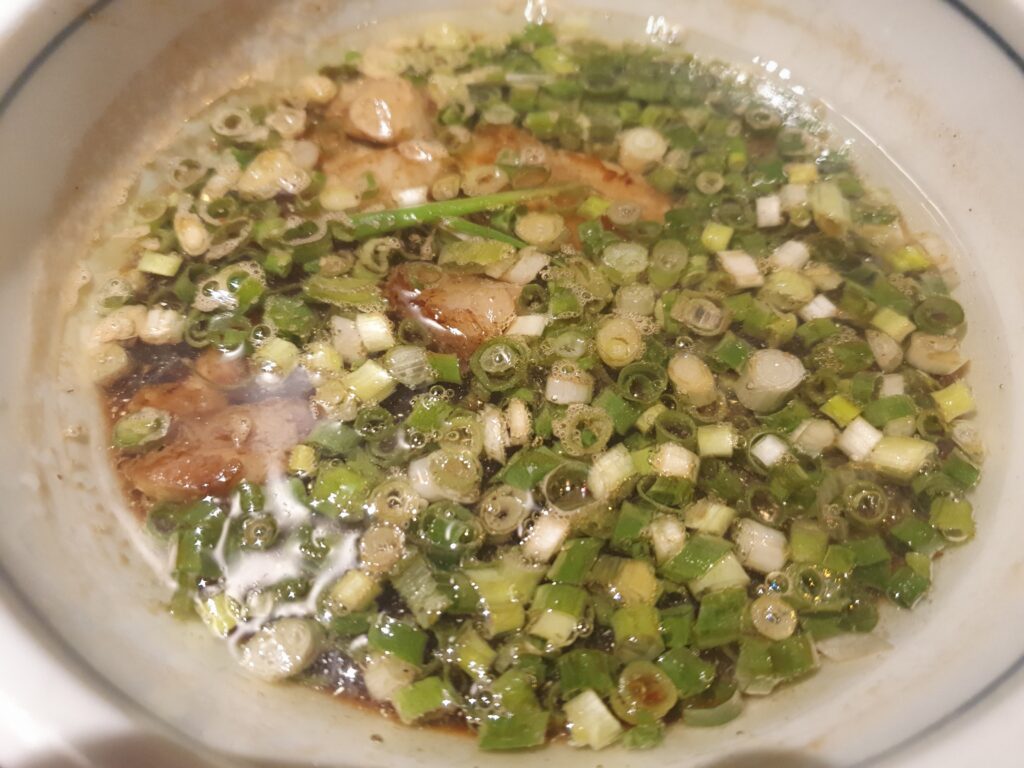
The warm, salty (slightly sour and acidic), rich fish powder, Japanese vinegar, and soy sauce triple-threat chicken broth (fermented for 18 months) comes with small chunks of fatty pork belly and bamboo shoots which both absorb every last bit of flavor and acts as the perfect counterbalance to the cold, springy, homemade noodles.
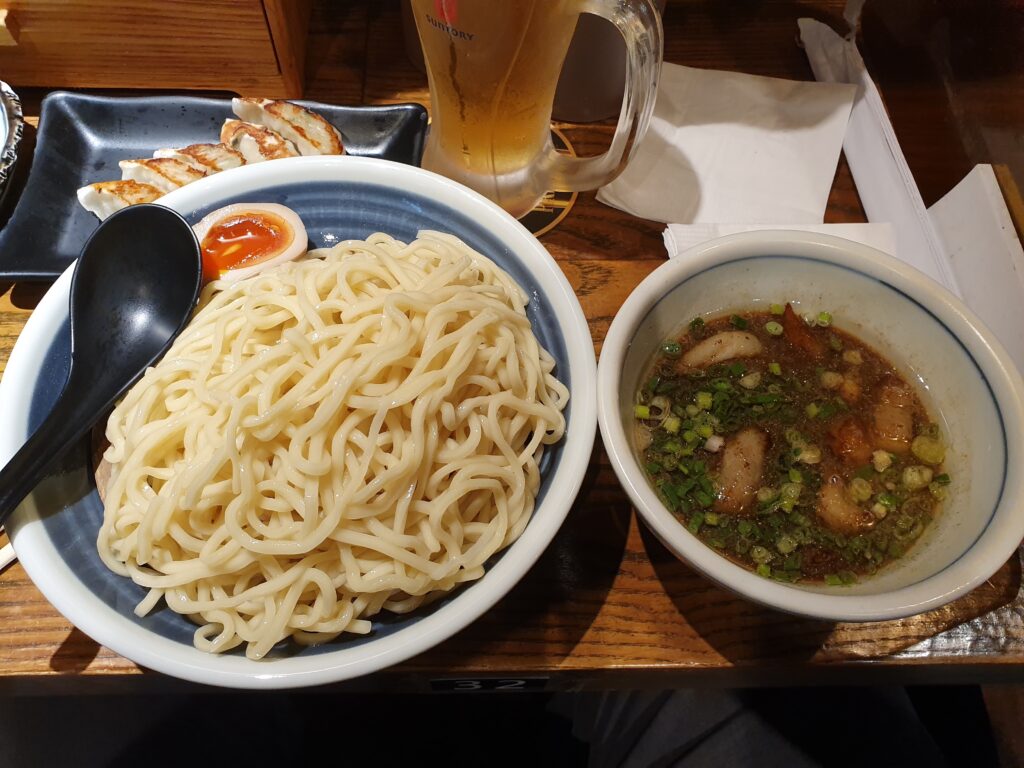
Tsukemen is not typically a dish that will break the bank, and Shugetsu stays true to its ‘salary-man roots’, coming in at HK$108. And the beauty of it is that whether you order 100g, 200g, or 300g of noodles, it’s the same price. This is all the more reason to wear sweatpants or loosen a notch on the belt and hunker down with a duvet-sized bed of noodles.
Pro Shugetsu Tsukemen Tip: Make sure your broth bowl is on the side of your dominant chopstick hand so that you don’t spray broth all over the table when dipping your noodles.
Don’t Forget the Dashi
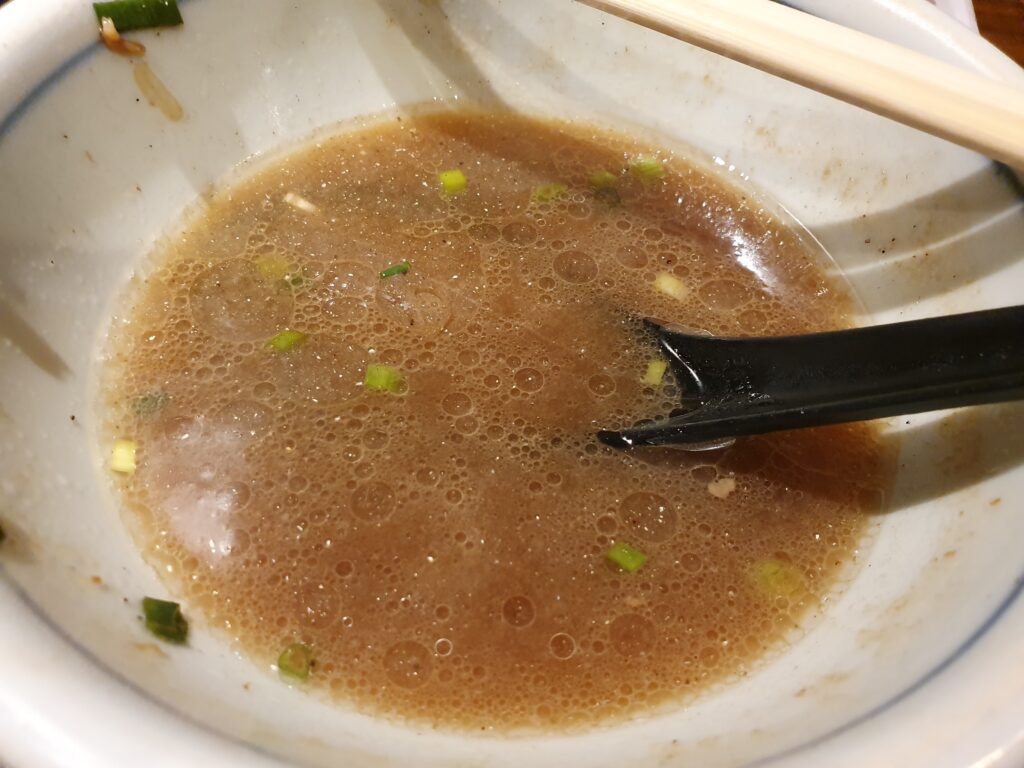
A huge pro tip when you eat tsukemen is to save a little bit of broth at the end for the ‘dashi’. Dashi is a soup base or stock that is added to your bowl to dilute the strength of the broth at the end of your meal. At Shugetsu, their dashi is a light chicken broth that is so drinkable you will be angry at yourself that you didn’t save more broth to have it added to.
Nostalgic is the only word I have to describe it. Shugetsu’s dashi takes me back to childhood rainy days when I would tuck in with my mother’s chicken soup and watch ‘Sword in the Stone’.
Just make sure to signal to one of the Shugetsu staff that you want the dashi. Generally, you can just point at your bowl or mimic a pouring motion and they will come right on over to fill it up.
Pale Ale Travel Tip: Looking for an Eastern European take on dumplings? Make sure to check out my post breaking down Dacha Restaurant & Bar, one of my favorite spots for high-quality traditional Ukrainian and Russian cuisine.
I Won’t Forgets-You, Shugetsu
Although I’m heading off to Ho Chi Minh City in Vietnam for several months, I will be back in Hong Kong shortly (as I recently had my visa renewed for another 2 years). You can bet as soon as I return that Shugetsu will be one of the very first places that I eat at.
There are two main Shugetsu branches in Hong Kong: Gough Street in Central and Hoi Kwong Street in Quarry Bay – unfortunately their Causeway Bay location recently closed shop. You really can’t go wrong with either location and they all have a very similar vibe: intimate, wooden-panel bar seating with open views of the skillful chefs tossing and cutting your noodles.
Website, Address, & Details: http://www.shugetsu.com.hk
Location:
- Central: 5 Gough St, Central
- Quarry Bay: 30 Hoi Kwong St, Quarry Bay
Oh, and both Shugetsu locations are included in the 2022 Michelin Guide and have consistently been racking up awards for years.
I hope for your sake that when you go to the Gough Street branch where Erica is working. You’ll know it’s her when you spot a lively woman donning a red bandana, flashing a welcoming smile, and emitting a euphonious voice that screams “you’re home.” She truly epitomizes everything I love about Hong Kong and humanity. Tell her 小龙 (Xiao Long) sent you.
If you have any favorite tsukemen or ramen spots in Hong Kong, let me know in the comments! I’d love to hear from you and hope you end up loving Shugetsu as much as I do!
Be grand,
Big Body
Big Body is a voracious lov…eater, a cowardly fighter, and a self-proclaimed curry goat BBQ-eating champion (don’t forget the donkey milk) who likes Stoicism, baseball, and writing in the third person. Having worked for himself for the last 7 years, he isn’t particularly successful but he does still drink ice-cold Sapporo draft beers with the best of them and knows his way around a Dai Pai Dong or two. He is based in Hong Kong but you can still find him in Saigon, Osaka, and Vienna for extended periods.
